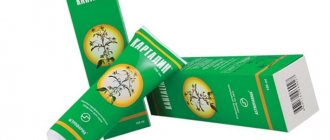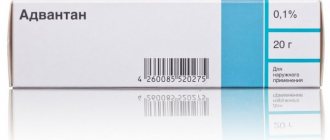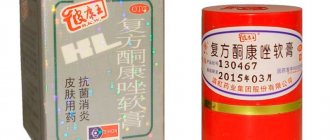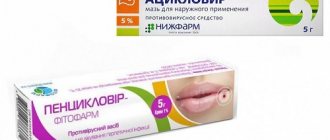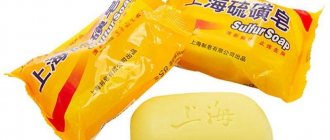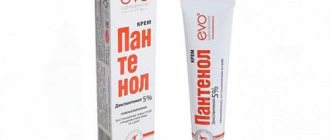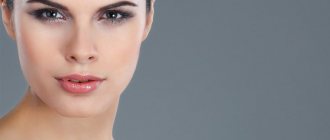When choosing cosmetics in a store today, it’s quite easy to get really confused - the range is so wide. Even the seller is not always able to competently advise what a particular product is good for and for whom it is suitable. What, for example, is the difference between cream and gel? Well, let's investigate.
Cream is a cosmetic product in the form of an opaque emulsion intended for skin care.
Gel is a cosmetic product for skin care that is transparent and does not contain oils or fats.
What is the difference between cream and facial gel
The question of which remedy is better is considered incorrect. You need to choose a cream or gel for the face depending on the situation, taking into account many factors. The cream is produced in the form of an emulsion; it almost always contains oils or fats, due to which it has a thicker and richer texture. The most commonly used plant sources are olive, almond, jojoba oil and others. From animals – spermaceti, lanolin, etc.
The combination of oil and water is the basis for any cosmetic creams. In most cases, the emulsion proportion is about 80% water and 20% fat. Although there are products with high fat content (up to 70% fat in the composition).
Gels are also intended for skin care, but their main difference is the absence of fats. Because of this, the gels are more liquid and have a translucent texture. An important difference between gel and cosmetic creams is complete solubility. It is quickly absorbed into the skin and does not leave a kind of greasy film after application, which covers the skin and can provoke the appearance of rashes, comedones, etc.
Characteristics of the cream
Historically, the cream got its name due to the fact that cream and wax were used for a long time. The modern soft form also consists of the main drug substance and a base, which is light, containing an emulsion and water. A distinctive feature of the cream is its ability to have a strong local effect, but it has virtually no systemic effect on the entire body. This is due to the fact that the mild form does not penetrate the bloodstream.
Considering the topic of how cream differs from ointment, it is necessary to point out that the former is quickly and completely absorbed into the epidermis and does not leave greasy marks on items of clothing. In addition, such a mild form is called not only medicines, but also cosmetics or confectionery products.
Which remedy will be more effective?
The first thing you should start with when choosing any cosmetic products is determining your skin type. For dry skin, creams that provide additional hydration are most often indicated. The same applies to aging skin (most anti-aging products have a creamy structure). But for people with oily skin, it is best to use a gel. Firstly, they are quickly absorbed, and secondly, they will not increase the oiliness of the skin, which can result in negative consequences.
The next criterion that determines the choice of the best product is its composition. Cosmetologists advise choosing products that contain as many natural substances as possible, because “fully chemical” cosmetics can harm the skin. Most often, the lack of natural ingredients is noted in inexpensive cosmetics, so experts advise saving wisely. The following tips will also help you choose a good product:
- Odor – a pungent and offensive odor often indicates low-quality products;
- Study the composition - if the manufacturer indicates only natural ingredients, this raises serious doubts about the quality of the product;
- Balanced formula - a good cream should contain both natural and chemical components. “100% natural” labels are a sales gimmick.
It is always best to choose products on the advice of experienced cosmetologists, but if consultation is not possible, always carefully study the composition.
We suggest you look at the correct ways to care for your face:
Similarities between ointment and cream
- Ointment and cream are products for external use.
- They can be used to heal skin lesions.
- The active substances in these two forms may be the same, but the bases are always different.
Various forms of drugs can be used to treat skin and other external diseases, as well as in cosmetology practice. These are powders (powders), lotions, lotions, shaken suspensions (chatters), sprays, gels, pastes, oils, creams, ointments, etc.
Quite often, a situation occurs when a patient, having received from a doctor the name of a medicine to be applied to the skin, is faced with a choice just before purchasing - ointment or cream? (sometimes colleagues who are exhausted by optimization forget to indicate) The name is the same, the price is slightly different... Are these dosage forms different and what is the right thing to do?
Attention! In the following text, the terminology is given as it is used by official medicine (mainly dermatologists); Manufacturers of various lines of cosmetics and products for aesthetic medicine, for the purpose of better promotion, interpret the word “cream” as broadly as desired, although in essence it may turn out to be an ointment or even a paste.
About dosage forms
Let's start with the fact that the active substance in modern dermatological preparations is quite small - milligrams, and sometimes even fractions of milligrams per dose. And in order to evenly distribute this very substance over the affected area, a base is used. And it determines at what stage of the inflammatory process the medicine will act, as well as the strength, duration and depth of the effect.
Gel
- has a soft and viscous consistency. It is usually made on a water basis and does not contain fats and oils. This is important when, on the one hand, you need to ensure long-term and convenient use (which is impossible, for example, for medical lotions), and on the other hand, you want to avoid hydrophobic components that interfere with the free outflow from the skin glands (for example, in the treatment of rosacea and common eels).
Cream
- a form whose base contains oils, water and an emulsifier that allows them to interact. Modern creams, as a rule, are multi-component. The cream is well absorbed into the skin, within a few minutes after application it does not stain clothes and does not leave an oily sheen on the skin. The depth of penetration of the active substance is less than that of the ointment. Used for inflammatory reactions, can be applied to more delicate areas of the body.
Ointment
- a form containing a higher amount of fat. Characterized by the greatest depth of penetration of the active substance. Recommended for the treatment of dry skin rashes in the presence of infiltration (compaction) in the skin. Typically applied to exposed skin. The use of ointments “under a bandage” (strictly on the doctor’s recommendation) further increases the depth of penetration of the active substance (this is sometimes necessary for old psoriatic plaques). Ointments should not be used on weeping skin rashes. Since the fatty components of ointments are not absorbed into the skin, they can stain clothing, which is not always acceptable in outpatient practice.
Lotion
- a liquid dosage form, the base of which contains alcohols and water. In finished dosage forms it is used mainly for treating the scalp (since it practically does not stain the hair).
Paste
- contains at least 20% dry matter. Pastes are prescribed in cases where an adsorbing and drying effect is required. Medicinal substances in pastes are poorly absorbed by the skin, so their effect in pastes is weaker than in ointments.
About the possibility of replacement
Independent (without the participation of the doctor who made the prescription) replacement of one dosage form with another is extremely undesirable, even if the concentration of the active substance is the same (and it is not always the same, check!).
However, life is more complicated than rules. If you are in an area where there are very few pharmacies and there is no choice of drugs, or the doctor has not indicated the form, etc., then you can replace the ointment with cream (if the active substance is in the same dose), but not vice versa!
In extreme cases, you will lose a little in effectiveness; after all, the cream usually has a less pronounced effect. But at least there will be no complications... unlike the reverse replacement (if the ointment is unknowingly applied to a more inflamed area than is permissible).
About simultaneous use
Modern dosage forms (at least those prescribed by dermatologists, and not purchased on the advice of neighbors and authors of columns about healthy lifestyle from home-grown newspapers) have long not contained terrible amounts of pork or bovine fat, petroleum jelly, lanolin. Now these are, as a rule, complex multi-component systems. They are well absorbed, providing the required concentration of the active substance at the required depth, do not contaminate clothes and skin, and have a reduced frequency of use.
IMPORTANT! Unless the doctor has indicated otherwise, dosage forms should not be mixed, as they may be destroyed during interaction. If there is a need to use several drugs at once, they should be applied in a checkerboard pattern, alternating areas, or alternating application over time.
Cream-gel - the golden mean
If you still cannot choose between gel and cream, cosmetologists offer the most optimal and average option - cream-gel. By using the gel cream you can get the benefits of both cosmetics. This is also an excellent choice for those who, for some reason, are not suitable for conventional gels and other cosmetics.
The peculiarity of the cream gel is its light texture. It is much more gentle than creams, and also does not have their main disadvantage - clogging the skin with a greasy film after application. This is an excellent tool, the use of which is universal. As a rule, cream-gel belongs to the category of daytime cosmetics, although some manufacturers produce products that should be used in the evening or before bed. Most often these are anti-aging creams or products for oily and combination skin types.
If we highlight the main advantages of the cream-gel, we should note:
- Absence of the disadvantages that are found in creams (shine after application, slow absorption, not suitable as a base for makeup, etc.);
- The gel-like consistency allows you to cope perfectly with teenage pimples, acne, rashes and other facial skin problems;
- Suitable for all skin types (unless the instructions indicate otherwise);
- Provides reliable protection throughout the day.
Most often, collagens, natural acids, vitamins, oils and other substances are added to the cream gel. It is important to remember that all components are listed in descending order, so pay special attention to the first 3-4 points. Stores often contain samples that will help you determine the desired consistency and check the skin tolerance of the product. To do this, just wait about 10-15 minutes after application.
Remember that a good product should not have any lumps or compactions. The structure of a good cream-gel should be uniform and light.
Conclusions TheDifference.ru
- The basis of the cream is water and oils (fats), the basis of the gel is water and moisture-retaining substances.
- The cream is in most cases opaque, the gel is transparent.
- The gel is more suitable for young, problematic, oily skin, the cream is more suitable for dry and mature skin.
- The gel is indispensable for daytime use and fits perfectly under makeup. The cream exhibits its nourishing and satiating properties more fully at night.
- Cream more often than gel leaves a greasy film on the skin. Cream can clog pores, but with gel the skin breathes better.
Conclusion
The choice of the best remedy is not clear-cut. Both creams and gels have their pros and cons, which need to be considered individually. Moreover, often a lot depends on the manufacturer and the specific composition, as well as on personal characteristics: from skin type to purpose of use. Most often, the cream is chosen by women with dry skin types, as well as after the age of 35, when the skin requires additional nutrition and hydration.
Gels can be used by both teenagers and older women, especially if the skin reacts negatively to oily products. To get the perfect middle, you need to choose a cream cream gel. In most cases, this is the most universal type of facial skin care cosmetics, which has a light texture and the advantages of both cream and gel.
Characteristics of the ointment
All ointments are usually based on fatty components. There is practically no water in the base. The main components of the ointment are lanolin, silicone or fats of animal and plant origin (mink, badger, almond oil, sea buckthorn).
It follows that ointment bases are divided into several types:
- Lipophilic
- Hydrophilic
- Lipophilic-hydrophilic
The purpose of the ointment is to create a film on the surface of the skin and provide a greenhouse effect.
Thanks to fats, the components penetrate through the pores deep into the tissues and have a therapeutic effect:
- Antibacterial
- Anti-inflammatory
- Regenerating
- Warming
- Painkiller
Due to their oily consistency, ointments can leave marks on clothing, so it is better to use them at home. Some treatments require a compress or bandage. Ointment is an exclusively medicinal product that can only be purchased at a pharmacy.
All representatives of pharmacological groups exist in ointment form:
- Anesthetics
- Vitamins
- Antibiotics
- Antiseptics
- Hormones
The therapeutic effect of using the ointment depends on many factors:
- Product storage conditions (temperature, humidity, etc.)
- Characteristics of the components contained in the composition
- Concentration of active substances (with a higher percentage of active ingredients, the ointment is more effective)
- Method of application (for example, for warming, you can additionally apply a bandage or compress, which will enhance the greenhouse effect and the effect of the product)
- Scope of application (drug molecules penetrate into soft tissues much faster than into osteochondral tissues)
- Duration of use (it takes time for the components to seep through the pores of the skin and get into the painful area. That is, the ointment will not work the first time)
- The condition of the skin and the degree of the disease for which the ointment is used (for example, ointment for varicose veins can help at the initial stage of the appearance of vascular network, but with an advanced version it will no longer help)
Gel, its features
Another form of soft medicine is a gel, the description of which will help you understand the difference between cream, gel and ointment. It is a type of ointment based on water, gelatin, cellulose and other substances with distributed healing components.
The gel is characterized by plasticity and elasticity; it is created by dissolving solid polymer particles and a neutralizing agent in small quantities in water. All components mix well, thicken and form a viscous soft form.
The structure of the gel is close to an ointment, but it does not clog pores, does not leave a greasy film, and evenly distributes the main substance. The topic of how ointment differs from cream and gel is very important for understanding the use of the latter. This soft dosage form is most effective for muscle and joint pain, osteochondrosis of the spine and neck, sprains, bruises, and salt deposits.
Gels are for external and internal use, ophthalmic, rectal and vaginal, and dental.
Face cream
Facial care is impossible without moisturizing products that fill the skin with beneficial ingredients, retain moisture and make the skin softer, more elastic and healthy.
We are all accustomed to using face cream, which can be selected for any skin type. For dry skin, you should choose more intense options and dense textures, and for oily skin, light ones. Creams mainly consist of water, natural oils (from 10 to 40%) and active ingredients, which are selected based on the characteristics of the skin.
READ ALSO: Get to work: how to take care of your facial skin after a vacation?
How to choose a face cream? To care for dry skin, choose products containing glycerin, hyaluronic acid, vegetable oils, as well as collagen and elastin - they attract fluid and retain water in the cells, perfectly moisturizing the skin. If you have oily skin, pay attention to the following components in the composition: herbal extracts, salicylic or glycolic acid, caffeine, retinol and panthenol. With the help of these products, the skin is moisturized, pores are narrowed, and inflammation is prevented.
Products for the care of normal facial skin include hyaluronic acid, vitamins C, A, E, antioxidants, natural oils and extracts. For combination skin, creams containing hyaluronic and salicylic acid, natural oils, herbal extracts and vitamins A and E are suitable. As you can see, the cream is a universal moisturizer, and you can choose it for absolutely every skin type.
READ ALSO: Age spots in summer: how to prevent and what to do if they have already appeared?
What is better - ointment, cream or gel?
Gel or cream – which is better to buy? This question is asked by buyers of medicines, cosmetics and even shaving products. And if the drug or cosmetic substance is also available in the form of a balm and ointment, the choice becomes even less obvious. Let's figure it out.
Figure 1 - Which is better - ointment, cream or gel? The answer is not always obvious.
How does a cream differ from an ointment, and an ointment from a gel?
The difference between cream, gel, balm and ointment is as follows:
- Cream is a dosage form based on oil and water. Creamy substances are easily absorbed, but are not able to penetrate deep into the tissue. They can be applied to surfaces that are constantly wet. In most cases, they are completely absorbed and do not stain clothes. You can rub the cream in and go about your business.
- The gel does not contain fats and oils, its acid-base indicators are close to those of the skin. It spreads easily over the skin, is quickly absorbed, and does not clog pores. Sometimes, after it dries, an airtight film remains (for example, Diclofenac). The structure of gel-like preparations can be liquid (for example, Troxevasin) or viscous. When stored in the refrigerator, they partially thicken, but when heated to room temperature, they restore their properties. Like creams, gels are convenient to use during the day.
- Ointment is a dosage form based on fats. It is absorbed more slowly than gel-like and creamy preparations, but it lasts longer. Penetrates deeply. It is applied to dry surfaces, scars, seals. Lubricated areas can be covered with bandages. The remaining fatty base usually has to be removed manually, so you need to apply ointment-like substances under clothing carefully. Some of them have a specific smell (for example, Vishnevsky ointment). The thickest ointments are called pastes. They contain up to 20% powdery substances. Most often they have drying properties.
- Balm is a medicinal or cosmetic product that contains no water at all. When you need to clarify what the difference is between a balm and a cream, this difference is given first. The absence of water allows balms to retain their properties for a long time. This is due to the fact that harmful bacteria multiply in water, and there is no natural habitat for them here.
Figure 2 – Which is better – gel or cream, depends on the patient’s age and the condition of his skin.
The main difference between cream and ointment is the percentage of fat content. Something in between these substances in texture is called liniment. This dosage form contains fats and oils.
If there is more fat, then the liniment resembles an ointment, if there is oil, it resembles a cream (for example, Synthomycin liniment).
At body temperature, liniments begin to melt, so they are applied a little at a time so that excess medicine does not drip onto clothes and the floor.
Is it possible to replace cream-type medications with ointment-type ones and vice versa?
What is better, ointment or cream, is decided by the doctor in each specific case. When it is not possible to obtain the required dosage form, the ointment can be replaced with cream.
Replacement is possible in cases where the dosage of the active substance in the creamy medicine is the same or less than in the ointment.
If the dosage is less, the cream will need to be applied more often (the number of additional procedures must be calculated in advance).
You cannot use ointment instead of cream. It is absorbed much deeper, so it can affect the “wrong” areas (for example, with a strong inflammatory process).
Figure 3 - When replacing ointment with cream, pay attention to the concentration of the active substance.
Do not use different dosage forms at the same time. When mixed, their components may not provide the same effect as desired.
If your treatment plan includes different medications and you are deciding whether to apply an ointment or a gel first, start with the gel-like substance.
When it is completely absorbed and its expiration date has passed (usually 2-4 hours), clean the treated surface from the film as much as possible, then lubricate it with ointment. This is also true for creams that should be used before ointments.
Gel and ointment - difference in shelf life
Expiration dates are usually given for sealed medications. As a rule, manufacturers write how long a substance can be stored unopened. In general, ointment-based preparations last longer than gel-based preparations because the fats they contain prevent drying out.
Figure 4 - Store medications as recommended by the manufacturer.
When storing ointment, pay attention to the manufacturer's recommendations. In the refrigerator, the medicine can harden, and at a crucial moment you simply cannot get it out of the tube.
Gel-like preparations are more convenient to use than ointment-like preparations with a similar effect, and therefore cost a little more.
Gel or ointment – which is better in emergency situations?
The gel is absorbed much faster than ointment. Therefore, in a situation where you urgently need to relieve pain, for example, a joint, it acts faster. If you need to provide a longer analgesic effect, relieve inflammation, ointment is preferable.
In addition to the duration of action, the list of ways in which an ointment differs from a gel includes the ability to adhere to the surfaces being treated. Gel-like medications adhere better to wet, wet surfaces, from which ointment-like medications simply slide off.
In general, ointment can penetrate deeper than gel. However, some gel preparations (for example, Traumeel) contain additives that ensure deep penetration of the main active ingredient. Then the difference between gel, cream and ointment is insignificant.
Figure 5 - Gels and creams act faster, ointments last longer.
Gel or cream – which is better to use for cosmetic purposes?
Cosmetics for hands, face and body are also made in the form of gels and creams.
- Cosmetic gel consists of 75−85% water. The remaining 15−25% are microparticles with the ability to retain moisture and other special properties. The high water content allows gel-like products to be easily absorbed into the skin, perfectly moisturize it, and avoid the formation of an unpleasant greasy film. They are recommended for young, combination, oily and problematic skin.
- Creams contain much less water than gel products. But they contain a lot of oils that provide different effects: nutrition, whitening, smoothing out fine wrinkles, etc. Creamy products are suitable for mature, dry and combination skin. They often leave an oily sheen and may not be completely absorbed. It is dangerous to apply them to problem skin - fats can clog pores and provoke even greater inflammation.
Figure 6 – Problem skin loves gel, while normal skin loves cream.
The main difference between gel and ointment and cream is the time of use: gel-like substances are best used in the morning and afternoon, and cream-like substances are best used before bed. There are day creams, which are similar in structure to a gel, and night creams, which are more like an ointment.
How does the effect of cream and ointment differ in inflammatory processes?
What is the difference between the effects of ointment and cream for a specific disease is usually explained by doctors when prescribing medications. If this does not happen, and the pharmacist asks something like: “Which Triderm do you want - ointment or cream?”, take into account the following information.
- The cream is effective at the beginning of the disease, when the inflammation is acute. This dosage form is also used in cases of swelling, weeping blisters, and itching. Creamy preparations are well absorbed into oily skin. They are also recommended for children.
- The ointment treats inflammation that does not go away for a long time or has already become chronic. Its components work well on dry, flaky skin. Ointment-like dosage forms are optimal when the active substance must penetrate into the deep layers of tissue.
So, knowing the difference between a cream and an ointment, gel, or balm, you can choose the drug in the optimal dosage form. This will speed up recovery, help reduce pain, avoid side effects and save money. Get well soon!
1 – Pharmacological notes
2 – Can you be allergic to allergy ointment?
Source: //uteka.ru/articles/zhenskoe-zdorove/chto-lychshe-maz-ili-krem-ili-gel/
Balms: how do they differ from creams, and how to use them correctly?
Daily skin care for the face and neck is the most important condition for youth and beauty, which every woman must observe. Delicate facial skin needs regular nutrition to maintain smoothness, elasticity, tone and healthy color. It must be protected from temperature changes, sharp winds and direct sunlight.
Most often, creams are used for such daily care. However, there is another interesting alternative - face balms. What is their feature?
Facial balm - origin story
Balms and oils for the face have traditionally been used in Rus' since pagan times. Russian herbalists knew very well about the healing powers contained in forest and steppe plants.
From generation to generation, their families passed down recipes for wonderful balms that could preserve and enhance female beauty.
Oil mixtures and balms were made on the basis of vegetable oils beneficial for the skin, the skin-care properties of which were enhanced by the addition of extracts of medicinal herbs, berries and fruits.
And of course, when creating balms, our ancestors did without such components as synthetic emulsifiers, perfume compositions and preservatives.
However, it is known that their cosmetic creations could be stored for quite a long period of time.
Balms and ointments were made in the summer and autumn, when the herbs gained their healing power, and were used throughout the year. How did they manage to maintain their properties for so long?
Modern manufacturers of natural cosmetics have answered this question by taking over the baton of their predecessors and analyzing their recipes.
Balm and face cream - composition features
The secret of long-term storage of balms is the complete absence of water in their composition - the main moisturizing component that all creams necessarily contain.
It would seem that this is a big drawback, because we are used to simultaneously nourishing and moisturizing the skin with daily care. However, oddly enough, water in cream is the main enemy of its naturalness, since it serves as a favorable environment for the proliferation of various harmful bacteria. The proliferation of bacteria causes the cream to quickly deteriorate.
To extend the shelf life of creams, cosmetics manufacturers are forced to add preservatives to them. In addition, the presence of water makes it necessary to add emulsifiers to give the cream its usual uniform consistency.
In the case of natural cosmetics, these are, of course, organic ingredients, but their cost is quite high, which affects the price of creams.
Since there is no water in face balms, pathogenic microflora do not multiply in them, which means there is no need to destroy it with the help of a preservative. Emulsifiers are also unnecessary here. Therefore, face balms consist exclusively of useful ingredients, the tasks of which are to nourish and protect the skin; they do not contain ballast substances.
Nourishing base oils contained in balms, such as cedar, peach, sea buckthorn, shea, provide excellent care for the face and neck, saturating it with essential vitamins and microelements. Beeswax protects against the effects of cold, temperature changes and wind, and essential oils disinfect and restore damaged epidermal cells.
Does this mean that using balms for daily care excludes skin hydration? Of course not! But it’s not enough to just choose and buy the right face balm, you need to learn how to use it. It is easy to add a moisturizing component to the balm - and it is better to do this immediately before applying the product to the skin.
Facial balm and oil - methods of use
There are two ways to combine the application of balm with moisturizing the skin:
- You can spray thermal water or a suitable hydrosol on your face and neck, and then apply the balm to damp skin, after lightly rubbing it in your hands.
- Take a small amount of balm from the jar, warm it slightly in your hands, add a little thermal water or hydrosol and rub between your palms. Apply the resulting cream-like product to the face and neck with light massage movements.
Depending on the amount of water or hydrosol, you can get a lighter or denser consistency of the balm. It can change depending on the condition of the skin, time of day or weather outside. Thus, facial care with the help of balm can be made completely individual.
Face balms, which you can buy in our store
Different manufacturers of natural cosmetics develop their own recipes for creams and balms, and each has its own interesting features.
The creators of hand-made cosmetics Makosh use high-quality oils in their cream-balms: grape seed, argan, shea and cedar, as well as extracts and extracts of medicinal plants, bee honey and other healing ingredients. This combination of ingredients is useful for skin of any type, provides excellent nutrition and protection, including from UV rays.
A special feature of the Mirolada brand cream-balm formulation is cedar resin combined with a composition of essential oils that have the most pronounced beneficial effect on the skin.
The manufacturer LadoYar bases its balms and ointments on cedar oil, obtained by cold pressing on a wooden press. This oil retains all nutrients and carries them deep into the cells of the epidermis.
Cream masks and cream ointments from the Ave Apis brand have an interesting composition that uses olive oil, beeswax, royal jelly, and mumiyo. All of them have an excellent healing effect, soften the skin well and smooth out its texture.
Face balm will be an excellent natural care product at any age and for any skin type.
The article was prepared by the team of the “Katena” project. Copying is permitted only if there is an active link to this project.
24.03.2016
Source: https://katyena.ru/krasota/naturalnaya-kosmetika/balzamy-chem-otlichayutsya-ot-kremov-i-kak-pravilno-imi-polzovatsya.html
Pastes and ointments
Paste differs from ointment in that it contains a large amount of powdery substances. Thanks to this, the pastes have a thicker consistency. The amount of powdery substances in the paste varies, but it is always not lower than 25% and not higher than 65%. A typical example of this product is the familiar toothpaste, which contains a large amount of powder, which helps to remove plaque more effectively.
Due to their paste composition, their effect is more intense and lasting. Pastes have drying and adsorbing properties, which make them possible to use as a remedy against inflammation.
Many popular drugs that exist today are available in different forms:
Bepanten –
The drug is available in two forms: ointment and cream. Ointment and cream contain one active substance - dexpanthenol, in both forms its concentration is the same and amounts to 5%. The main difference is the consistency of these medicinal products: the cream is lighter, and the ointment has a thick consistency and has a more intense effect. The ointment contains 50 grams of almond oil and 250 mg of lanolin; these substances perfectly moisturize the skin. The ointment also contains beeswax.
Available in the form of ointment and cream, it is used for skin inflammation and allergies. The main active substance of both ointment and cream is betamethasone. The composition of various types of this remedy includes gentamicin, which is effective against bacterial infections, clotrimazole, which copes well with fungal infections, and salicylic acid. The cream is more suitable for oily skin, and the ointment is more suitable for dry skin. .
Akriderm - ointment for external use
Clotrimazole
– used for fungal pathologies of the skin and has two forms: cream and ointment. The active substance is clotrimazole, both forms contain the same amount: 0.01 g per 1 g of product. The ointment is thicker and greasy, more suitable for dry skin; it is better to apply cream to wet areas. .
Triderm
is a very popular drug that is used to treat inflammatory and fungal diseases. Available in the form of ointment and cream. The composition of the active substances in both forms of the drug is the same, only the base differs. The ointment penetrates deeper and faster, which is why it is used for severe forms of diseases. The cream contains alcohols, which are effective for weeping dermatitis, but they can cause allergies.
Any form of cosmetic and medicinal products has its own characteristics that must be used wisely. Before purchasing this or that product, think about whether it is suitable for your skin, whether a cream or emulsion will be effective in solving your particular problem?
Please note the following products:
After fractures, bone tissue restoration
. In order to speed up this process, Mumiyo cream was created. It has anti-inflammatory, analgesic, wound-healing, tissue-regenerating effects. Shilajit cream is effective against stretch marks. As an anti-cellulite massage cream, it provides quick visible results.
Gel with DHEA (Active Longevity BIA-Gel) normalizes hormonal balance, recommended for women and men to restore and maintain the natural hormonal balance in the body, to prolong youth. Regular use of gel with DHEA prevents obesity, diabetes, multiple sclerosis, osteoporosis, cardiovascular diseases, and prevents depression. BIA-gel moisturizes the skin and effectively eliminates age spots.



